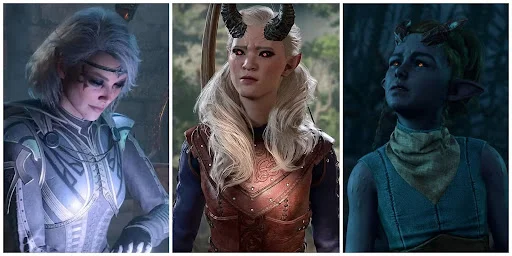The way we experience stories in video games has evolved dramatically over the past few decades. Early titles like Super Mario Bros. or The Legend of Zelda offered simple narratives focused on gameplay mechanics, while modern masterpieces such as The Last of Us Part II and Cyberpunk 2077 immerse players in cinematic universes filled with emotional depth and choice. Yet, even these sophisticated games rely on scripts that have an endpoint. Now, generative AI — powered by large language models and machine learning systems — promises to take storytelling beyond those limitations. By enabling dynamic plots, adaptive dialogue, and player-specific outcomes, AI can turn every gaming experience into something personal, unpredictable, and alive.
The Rise of Dynamic Narrative Systems
Generative AI represents a new frontier for dynamic storytelling, where every event, dialogue, and quest can change in real time. Unlike traditional branching storylines that require developers to pre-write every possible path, AI models can create context-aware dialogue or plot developments as players progress. This innovation not only saves development time but also makes worlds feel genuinely responsive. Imagine entering a town in a fantasy RPG, where the inhabitants discuss your most recent victory or failure, all generated procedurally.
Modern engines like Unreal Engine 5 and Unity are already exploring integrations that allow AI to analyze player decisions, generating unique narrative consequences. Some prototypes even use reinforcement learning to predict the emotional tone of a scene and adjust pacing accordingly. This level of reactivity transforms storytelling into a living system that grows alongside the player. Much like tracking changes in cs 2 rankings, AI-driven narrative engines could adjust to performance, strategy, or even playstyle, ensuring no two playthroughs feel the same. The result is a new breed of games where storytelling becomes as fluid and evolving as the gameplay itself.
Personalized Characters and Emotional Depth

In traditional games, non-playable characters (NPCs) are limited by predefined dialogue trees and behavioral scripts. Once the player has heard all the lines, those interactions lose their sense of wonder. Generative AI fundamentally changes this relationship. Using conversational models similar to ChatGPT, developers can create NPCs capable of remembering past interactions, interpreting tone, and even adapting their behavior based on trust or hostility levels.
Imagine an open-world survival game where a merchant remembers your betrayal from 20 hours earlier and refuses to trade until you regain their trust. Or a companion who genuinely reacts with sadness if you ignore them for too long. By giving digital characters persistence and emotion, generative AI adds a human layer to virtual storytelling that was previously impossible. This realism enhances immersion — not just because it feels alive, but because it mirrors the unpredictable nature of human relationships.
Games like Starfield, Baldur’s Gate 3, and The Elder Scrolls VI are already exploring procedural dialogue tools that allow NPCs to react dynamically to player actions. As AI learns to interpret tone, body language, and player history, emotional storytelling could soon become one of the defining features of next-generation gaming.
Expanding Player Creativity
Generative AI doesn’t only empower developers — it gives players unprecedented creative freedom. In many upcoming projects, players can use natural language prompts to generate new quests, enemies, or even dialogue. Imagine typing a simple command like “create a side quest about rescuing a lost explorer from a crystal cave,” and the AI instantly builds a scenario, characters, and environmental storytelling elements that fit within the world’s lore.
This type of collaboration transforms gaming into a creative dialogue between the player and the system. It allows users to become co-authors of the story rather than passive participants. Developers can harness this creativity to extend the lifespan of their games, as communities continuously build and share new stories powered by AI. The boundary between official and fan-made content could blur completely — leading to massive, evolving worlds that grow through collective imagination.
This direction also enhances accessibility. Players who lack coding or design skills can still contribute to the game’s ecosystem through AI-assisted creation. As tools improve, we might see full community-built RPGs, survival sandboxes, and visual novels written collaboratively with AI storytellers.
Challenges and Ethical Considerations
Despite the excitement, the use of generative AI in storytelling brings new risks. The first challenge is authorship — who owns the story created by AI? Is it the developer, the player, or the model’s dataset contributors? These questions will become increasingly complex as AI systems generate more creative content.
Another issue is narrative quality. While AI can generate dialogue quickly, it often lacks a sense of emotional consistency or thematic direction. Without careful supervision, stories could feel fragmented or even nonsensical. Developers must therefore maintain a balance between AI autonomy and human direction, ensuring the emotional arc and artistic integrity remain intact.
Ethically, generative AI also raises data-use and copyright concerns. Many models are trained on existing literature, film scripts, or community fan-fiction, which complicates intellectual-property rights. Transparency and proper attribution will be vital to building player trust. Finally, developers must implement safeguards to prevent the AI from producing harmful or biased content, especially in multiplayer or user-generated environments where dialogue is created on the fly.
The Future of AI-Driven Narratives

The long-term vision for AI in gaming goes beyond adaptive storytelling — it points toward living worlds. Future titles might feature environments that evolve over months or even years, shaped by collective player behavior. Villages could rebuild after battles, characters could have families, and global events might unfold differently across servers. Generative AI would orchestrate this ongoing transformation, keeping every player’s experience distinct yet interconnected.
Developers from major studios and indie teams alike are investing heavily in AI tools that assist with dialogue generation, quest design, and voice synthesis. This allows small creative teams to achieve storytelling depth once reserved for blockbuster titles. As AI becomes more accessible, we may see a democratization of game creation — where anyone can build a rich narrative world using conversational design interfaces.
Such advancements will not replace writers but amplify their vision. Human creativity gives stories soul and meaning, while AI provides scalability and adaptability. Together, they form a hybrid storytelling model that could define the future of the medium.
Conclusion
Generative AI is not simply a technological innovation — it’s a creative revolution. It allows stories to evolve dynamically, characters to think and feel, and players to shape their adventures in ways previously unimaginable. This technology is redefining the connection between authorship, emotion, and interactivity, opening the door to a future where games are never truly finished but always growing.
While challenges remain, especially around ethics and control, the potential is limitless. As AI matures, storytelling in games will become more immersive, more human, and more personal. The next great narrative in gaming won’t just be told to you — it will be written with you.






